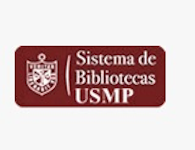Dental caries and oral health‐related quality of life of 3‐year‐olds living in Lima, Peru

Ver/
Trabajo
(application/pdf: 179.2Kb)
(application/pdf: 179.2Kb)
Fecha
2020Autor(es)
Pesaressi, Eraldo
Villena, Rita S.
Frencken, Jo E.
Metadatos
Mostrar el registro completo del ítemResumen
Background
Untreated dental caries negatively impacts children and their families; the implication of which is best measured through assessing quality of life. Information related to Oral Health‐Related Quality of Life (OHRQoL) in Peruvian pre‐school children is scarce.
Aim
To investigate the relationship between dental caries and the OHRQoL of 3‐year‐old children.
Design
Randomly selected government pre‐schools (n = 17), situated in three low socio‐economic status districts in Lima, participated. The OHRQoL data were obtained using the Peruvian (P) ECOHIS questionnaire. Clinical examinations using the Caries Assessment Spectrum and Treatment (CAST) instrument were performed on 308 children. From which, 213 parents returned the P‐ECOHIS form. ANOVA, Tamhane, and Tukey methods were used to analyse the data.
Results
The mean age of the children was 3.04 years. The two highest mean P‐ECOHIS scores in the child section were ‘child symptoms’ and ‘child psychology’ while ‘parent distress’ scored highest in the parent section. The prevalence of dental caries was 64.3% (CAST scores 4‐7). Including CASTcode 3 (enamel carious lesion), the dental caries prevalence was 93.4%. The mean P‐ECOHIS scores for ‘child symptoms’, ‘child functions’, ‘child impact’, ‘parent distress’, and ‘the sample’ were statistically significantly higher for children with MaxCASTcodes 5 and 6 (dentine and pulpally involved cavities, respectively) than for those with MaxCASTcode 3.
Conclusion
The presence of cavitated teeth with and without pulpal involvement impacts negatively on the OHRQoL of 3‐year‐old children.
Colecciones
- Artículos [274]
Editor
John Wiley & Sons Ltd
Acceso
info:eu-repo/semantics/openAccess
Financiamiento
World Dental Federation (FDI)







